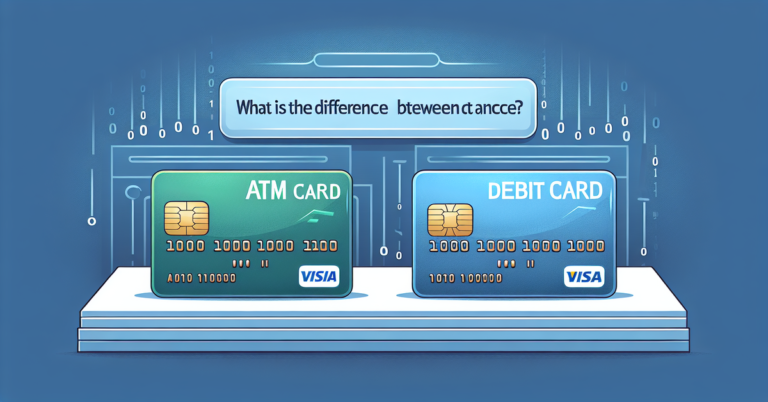Is Atm Card a Debit Card
Isn't it intriguing how two cards can seem so similar yet serve different purposes? You might think an ATM card is just another type of debit card, but the distinctions could impact how you manage your finances. While both cards offer access to your bank account, they cater to different needs. Understanding these nuances can help you make informed decisions about which card suits your lifestyle best. So, what specific features set them apart, and how does that affect your everyday transactions?
Understanding ATM Cards
ATM cards are specialized financial tools that allow you to access your bank account and withdraw cash from ATMs, but their functionality goes beyond just cash withdrawals. These cards provide you with a secure method to manage your finances. You can check your account balance, transfer funds between accounts, and even deposit cash or checks at select ATMs. Security is a priority; your card typically includes a Personal Identification Number (PIN) that helps protect against unauthorized access. Additionally, many ATM cards are equipped with chip technology, enhancing their safety against fraud. Understanding how to use your ATM card effectively can help you maintain better control over your financial transactions while minimizing risks associated with cash handling.
Defining Debit Cards
A debit card is a financial instrument that allows you to make purchases directly from your bank account, functioning as an immediate link between your spending and available funds. This means that when you use a debit card, you're using money you already have, reducing the risk of debt. Debit cards often come with safety features, such as PIN protection and fraud monitoring, ensuring your transactions remain secure. Additionally, many banks provide transaction alerts to help you keep track of your spending. Unlike credit cards, there's no borrowing involved, which can be appealing if you prioritize staying within your budget. Overall, debit cards offer a convenient and safe way to manage your finances while maintaining direct control over your money.
Key Differences Between Cards
Understanding the key differences between debit cards and ATM cards is essential for effectively managing your finances. Debit cards allow you to make purchases directly from your checking account, while ATM cards are primarily used for cash withdrawals and balance inquiries at ATMs. With a debit card, you can shop online or in stores, providing greater convenience. Conversely, ATM cards typically don't offer online shopping capabilities. Additionally, debit cards often come with enhanced security features, such as chip technology and fraud monitoring, which help protect your funds. It's vital to choose the right card based on your spending habits and security needs, ensuring that you're making informed decisions to safeguard your financial well-being.
Usage Scenarios for Each Card
When considering how to use your financial cards, recognizing the specific scenarios for debit and ATM cards can help you optimize your transactions. Here's a breakdown:
| Card Type | Usage Scenario |
|---|---|
| Debit Card | Online purchases and bill payments |
| Debit Card | In-store purchases with PIN verification |
| ATM Card | Cash withdrawals at ATMs |
| ATM Card | Balance inquiries at ATMs |
| ATM Card | Accessing funds in foreign countries |
Using debit cards is ideal for everyday transactions, ensuring you're protected from overspending. On the other hand, ATM cards are your go-to for accessing cash securely. Understanding these differences will enhance your financial safety and efficiency.
Pros and Cons of Each Card
While both debit and ATM cards serve essential functions in managing your finances, each comes with its own set of advantages and disadvantages that can impact your spending habits and accessibility to cash. Debit cards allow for direct spending from your bank account, which can help you stay within budget and avoid debt. However, they may expose you to fraud if not properly secured. On the other hand, ATM cards primarily provide access to cash without direct purchasing capabilities, making them safer for specific transactions. Yet, they can limit your spending flexibility, as you need to withdraw cash first. Understanding these pros and cons can help you make informed decisions regarding your financial safety and convenience.
Choosing the Right Card for You
Deciding between a debit card and an ATM card depends largely on your spending habits and financial needs. If you prioritize convenience and direct access to your checking account, a debit card may be the better choice. It allows for purchases and online transactions while providing the same safety features as a credit card, such as fraud protection. On the other hand, if you only need cash withdrawals, an ATM card can suffice. However, it typically lacks the broader functionality of a debit card. Consider your lifestyle: if you often shop or pay bills online, opt for a debit card. If you're focused on cash withdrawals, an ATM card might be ideal, ensuring you're making a choice that aligns with your financial safety and convenience.


